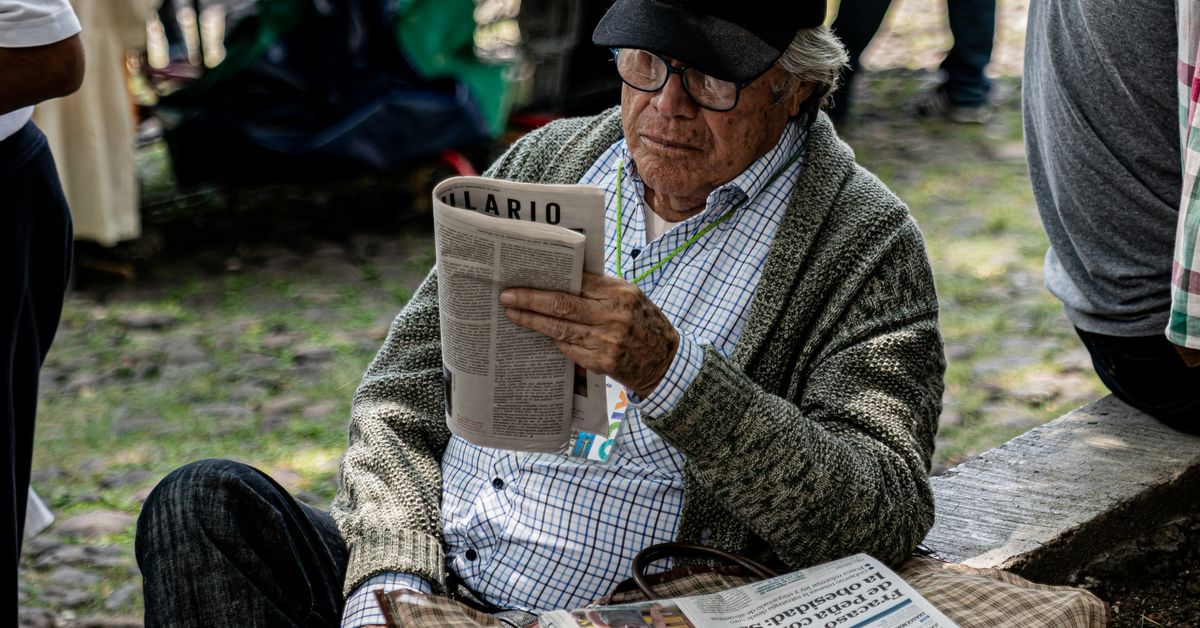Unleashing Potential Through Community-Driven Fitness Initiatives
In recent years, the concept of community-driven fitness initiatives has emerged as a vibrant solution to the growing health crisis that many communities face. Gone are the days when fitness was a solitary endeavor, confined to gym memberships and personal trainers. Today, there’s a palpable shift towards engaging entire communities in wellness activities that not only improve individual health but also strengthen social ties. It makes one wonder—what is it about these community-focused initiatives that seems to unleash untapped potential in individuals?
The Power of Togetherness
At its core, community-driven fitness is about inclusivity and collective motivation. I remember when my neighborhood organized a weekly jogging club that welcomed all levels of fitness. Initially, I was hesitant—what if I lagged behind? (Spoiler alert: I did lag behind more than a few times!) But the beauty of that experience lay in the camaraderie. We cheered each other on, exchanged tips, and shared our own stories. Together, we not only improved our endurance but cultivated relationships that transcended the tracks.
Research supports this notion, too. Studies have shown that social support plays a critical role in encouraging individuals to adopt and maintain healthy behaviors. Whether it’s a walking group or a community yoga class, the shared experience fosters accountability. Participants are far less likely to skip out if they know their friends are waiting for them.
Examples of Successful Initiatives
Across the globe, initiatives aimed at building healthier communities are flourishing. Here are a few remarkable examples that stand out:
- Parkrun: This free, weekly 5k run has become a phenomenon in over 20 countries. The event encourages individuals of all ages and abilities to participate, fostering a spirit of inclusivity and community engagement.
- Community Gardens: While not strictly a fitness initiative, community gardens promote physical activity and healthy eating. Participants engage in gardening, which can be a surprisingly intense workout (trust me, you’ll feel those squats!).
- Neighborhood Sports Leagues: From soccer to ultimate frisbee, these leagues not only promote physical fitness but also encourage teamwork and community spirit. The thrill of competition, coupled with the joy of playing with friends, adds an extra layer of motivation.
These examples illustrate how diverse and adaptable community-driven fitness initiatives can be. They can take myriad forms, from organized sports to informal meet-ups, and cater to various interests and fitness levels.
Breaking Down Barriers
It’s crucial to address the barriers that often prevent individuals from participating in fitness activities. Many people feel intimidated by traditional gym settings, where the culture can be daunting. Community initiatives, on the other hand, often provide a more welcoming atmosphere. They’re grounded in the understanding that everyone starts somewhere. Remember the first time you tried a new exercise? (I still cringe thinking about my awkward attempts at Zumba!)
Community-driven fitness initiatives often target specific populations who may feel marginalized or excluded from conventional fitness spaces. For instance, organizations like Girls on the Run empower young girls through running programs designed to build confidence and promote physical activity. These programs foster a safe, supportive environment for participants, breaking down the barriers of self-doubt and fear.
Health Benefits Beyond the Physical
While the physical benefits of community-driven fitness are undeniable—improved cardiovascular health, increased strength, and weight management—there’s an emotional and psychological aspect that deserves equal attention. Participating in community fitness initiatives can significantly enhance mental well-being.
Studies suggest that regular physical activity can help reduce symptoms of anxiety and depression. It’s a way to channel stress and experience a boost in mood. But add the element of community, and you have a recipe for even greater benefits. Engaging with others creates a support system, which is vital during challenging times. I often recall moments after a particularly grueling workout where the endorphins kicked in, paired with laughter and shared triumphs over the day’s exertions—it was pure magic.
Fostering Inclusivity
Inclusivity is a cornerstone of community-driven initiatives. They aim to reach individuals of all backgrounds, ages, and abilities. Programs tailored for seniors, adaptive sports for individuals with disabilities, and youth-focused workouts exemplify how fitness can be accessible to everyone. It’s not just about breaking a sweat; it’s about breaking down barriers.
The Special Olympics is a stellar example of how inclusivity can transform lives. By providing athletes with intellectual disabilities the opportunity to train and compete, they create a community that celebrates diversity. The impact goes beyond physical activity; it fosters a sense of belonging and pride.
Fueling Personal Growth
When people come together in fitness, they don’t just improve their health—they often discover newfound strengths and capabilities. Participating in community-driven initiatives can help individuals set and achieve personal goals, from completing a 5k to mastering a new skill.
Consider the story of a participant in a local cycling group. Initially apprehensive about joining, she soon found herself conquering longer distances than she ever thought possible. “I didn’t just gain endurance,” she shared during a post-ride coffee chat, “I gained confidence. I realized I could tackle challenges both on and off the bike.”
The Role of Technology
In today’s digital age, technology plays a vital role in enhancing community-driven fitness initiatives. Social media platforms, fitness apps, and online challenges have made it easier than ever to connect with others and stay motivated. Who doesn’t love sharing their workout selfies or tracking progress with a supportive community online?
For instance, apps like Strava and Fitbit have created virtual communities around fitness. Users can share their workouts, give kudos, and even challenge friends to achieve fitness goals. It’s fascinating how technology has transformed the landscape of fitness, making it more social and interconnected.
Virtual Events and Challenges
Virtual events have surged in popularity, particularly in response to the global pandemic. Many communities adapted by hosting online fitness challenges, allowing individuals to participate from the comfort of their homes. I attended a virtual 10k race last year, and while I missed the electric atmosphere of a live event, there was something exhilarating about seeing participants from different corners of the world uniting for a common goal.
These virtual platforms have also provided opportunities for communities to engage with fitness experts through online classes, workshops, and motivational talks. It’s a way to blend expertise with community spirit—helping individuals learn from professionals while still feeling connected.
Challenges and Considerations
While the benefits of community-driven fitness initiatives are abundant, they’re not without challenges. Funding, resources, and accessibility can be significant hurdles. Many initiatives rely on volunteers or local sponsorships, which can fluctuate. It’s a sobering reality that sometimes the most impactful programs struggle to survive.
Moreover, not every community has equal access to these resources. Urban areas may have more opportunities, whereas rural communities might feel left behind. This disparity raises questions about equity in health and fitness. A truly transformative initiative should strive to reach all individuals, regardless of geographical or socio-economic barriers.
Creating Sustainable Models
To ensure longevity, community-driven fitness initiatives must create sustainable models. Collaboration between local governments, businesses, and non-profits can lead to more robust support systems. For example, partnerships with schools can promote youth engagement in fitness from an early age, establishing healthy habits that last a lifetime.
Moreover, obtaining feedback from participants is essential. Knowing what works and what doesn’t helps tailor programs to community needs. (Trust me, nobody wants to be the organizer of a fitness event that nobody shows up to—awkward!)
Advocacy and Awareness
Advocacy plays a key role in promoting community fitness initiatives. Raising awareness about the importance of physical activity can lead to increased participation and support. Grassroots campaigns, local events, and even social media drives can mobilize communities to take action.
Let’s not forget the power of storytelling. Sharing success stories from participants can inspire others to join. “If they can do it, why can’t I?”—this thought often resonates with those on the fence about participating.
The Future of Community-Driven Fitness
The future of community-driven fitness initiatives looks promising, especially as the conversation around health and wellness continues to evolve. As we become more aware of the importance of mental health, the link between physical activity and psychological well-being will undoubtedly garner more attention.
Innovative programs that fuse fitness with nutrition education, mental health awareness, and social support will likely emerge. Imagine a community fitness festival that includes not just exercise classes but also cooking demonstrations, mindfulness workshops, and mental health resources. It’s about creating a holistic approach to wellness, and communities are increasingly recognizing that need.
Empowering Future Generations
Empowering future generations to embrace fitness as a lifestyle will be crucial. By instilling the value of community and physical activity from a young age, we can create a culture that prioritizes health and well-being. Schools, after-school programs, and family-oriented activities can lay the groundwork for lifelong engagement.
Moreover, involving youth in the planning and execution of initiatives can foster leadership skills and a sense of ownership. After all, who knows better what their peers want than the young people themselves?
Conclusion: A Call to Action
As we navigate the complexities of modern life, the importance of community-driven fitness initiatives cannot be overstated. They are a beacon of hope in a world where isolation and sedentary lifestyles are prevalent. By harnessing the power of togetherness, we can unleash potential in individuals and communities alike.
So, whether you’re an avid athlete, a casual walker, or someone who simply wants to connect with others, consider getting involved in a local initiative. You never know—your presence might just inspire someone else to take that first step. After all, the journey to wellness is often best taken together.
Let’s rally together and celebrate the spirit of community fitness. After all, as the saying goes, “It takes a village”—and in this case, it might just take a village to get fit!




